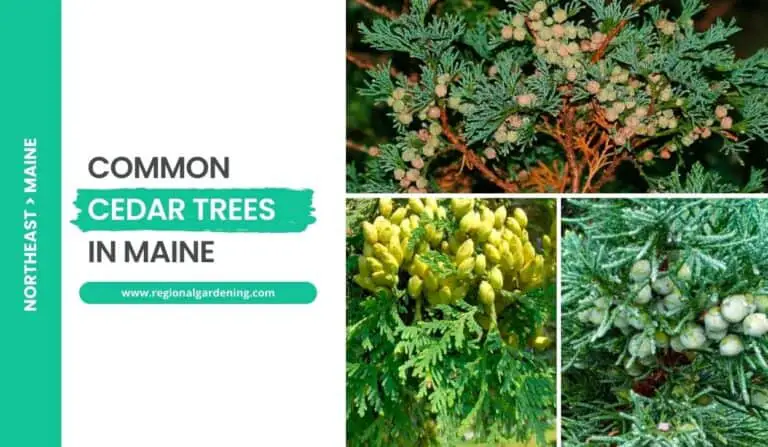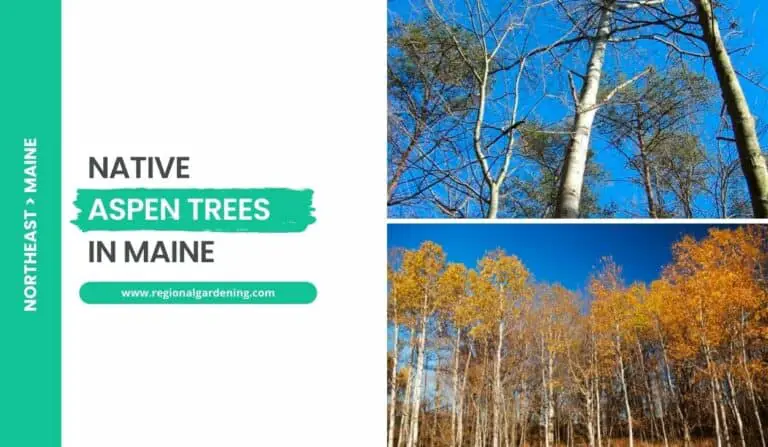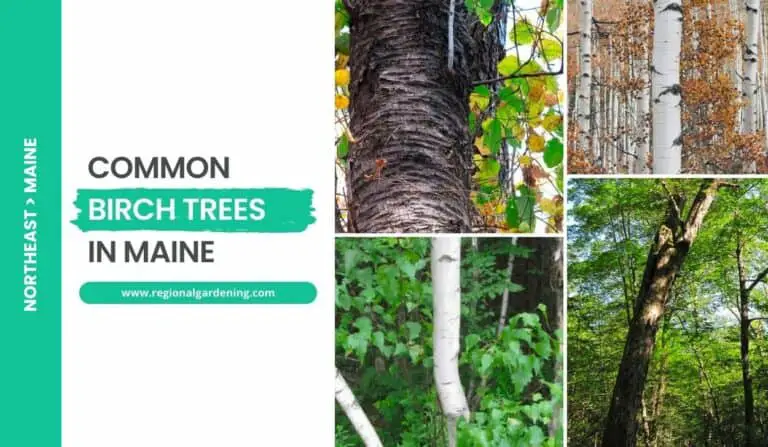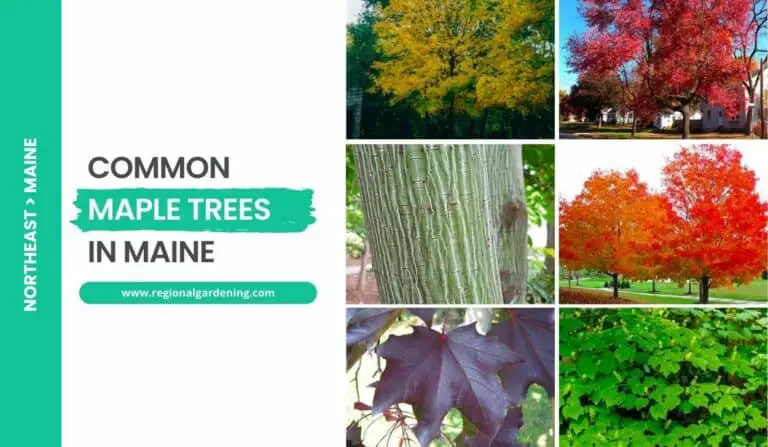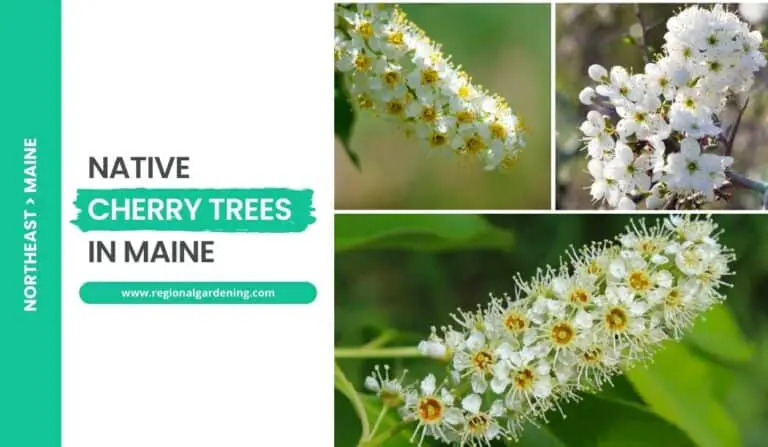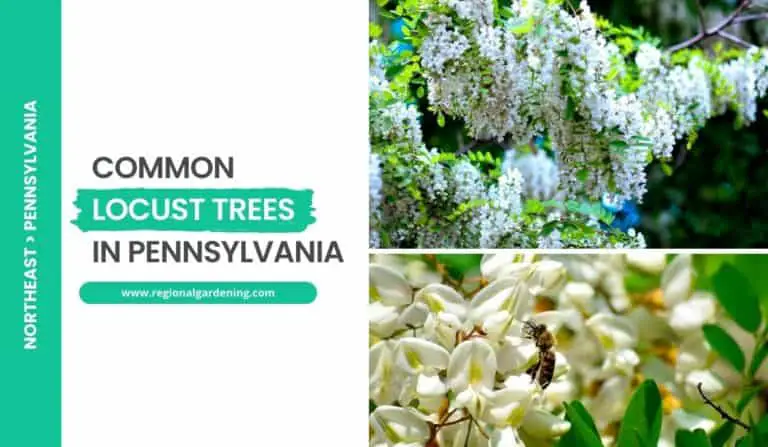2 Spruce Trees In Pennsylvania (Photos & Identification)
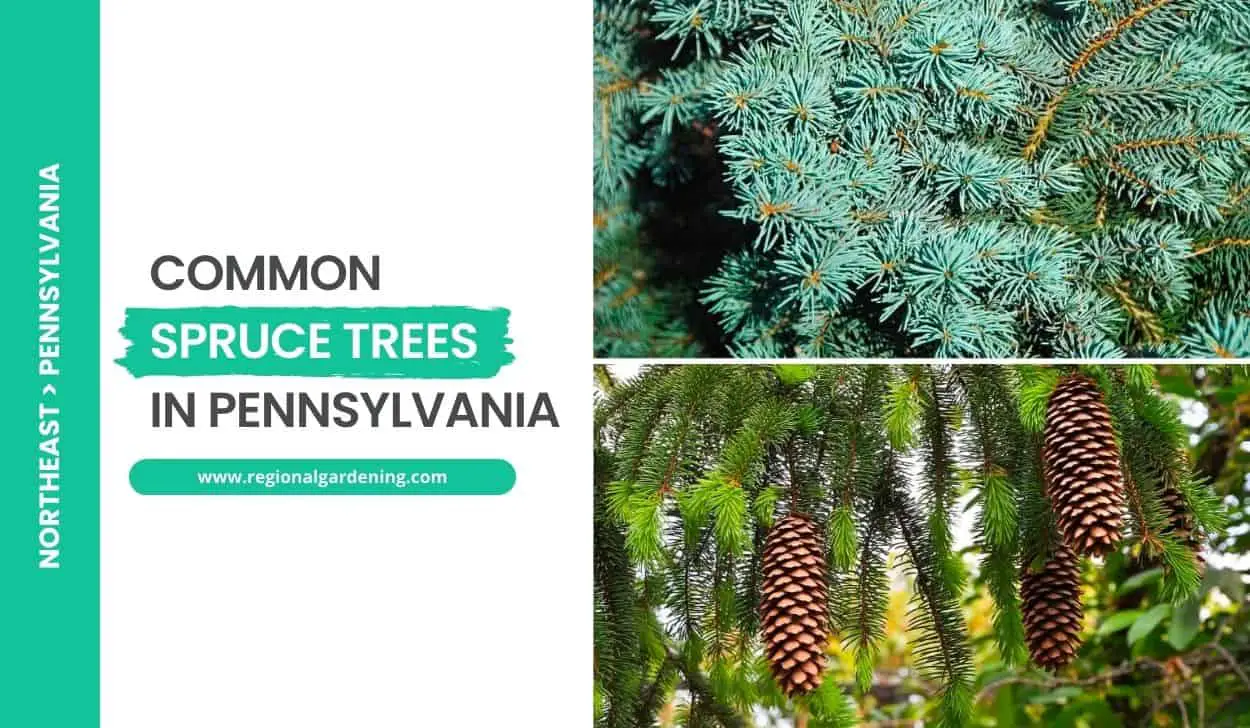
Pennsylvania’s vast wilderness is a diverse mosaic of flora, including the native Blue and non-native Norway spruce trees. These native spruce species have firmly established themselves in the state, showcasing their remarkable resilience and captivating beauty.
These spruce trees stand proudly in the depths of its mysterious forests or adorning the serene northern landscapes, providing shelter for wildlife, timber for construction, and a sense of enchantment to all who encounter them.
This article delves into two common spruce trees in Pennsylvania, providing high-quality photographs and detailed descriptions of their physical characteristics, natural habitats, and range.
So, let’s begin.
1. Blue Spruce
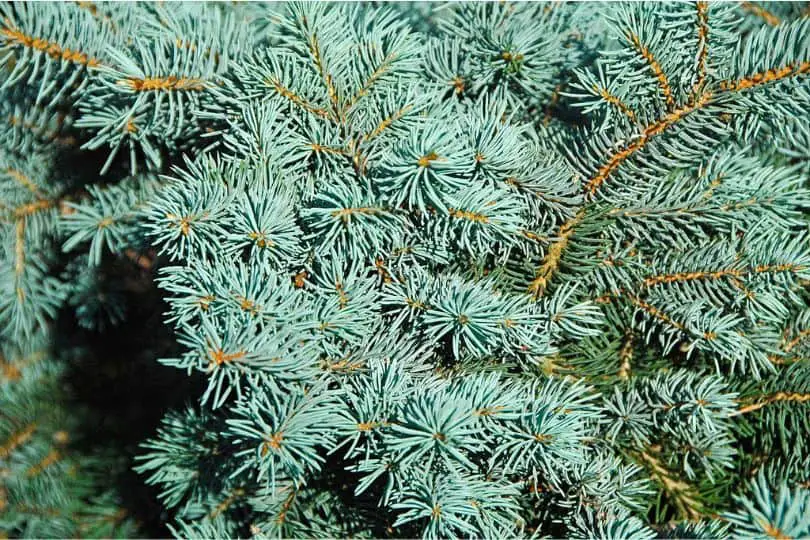
- Scientific Name: Picea pungens Engelm.
- Common Name(s): Blue Spruce
- Mature Height: 60-150 feet (18-46 meters)
- Native Region: Rocky Mountains
- Flowers: No Flowers
- Fruit: Cones to 4 inches long, shiny chestnut brown
- Uses: Widely planted as an ornamental tree in Pennsylvania landscapes.
The Blue Spruce, Picea pungens Engelm., is a well-known tree in Pennsylvania settings. It is a slow-growing evergreen tree that can reach astounding heights ranging from 60 to 150 feet (18 to 46 meters). This tree is native to the Rocky Mountains, and can be found at elevations ranging from 5,900 to 10,000 feet.
The needles of the Blue Spruce are one of its distinguishing characteristics. The needles are 4-sided, rigid, and bluish-green in hue. They are in-curved and spiny-pointed, and they can live for 7 to 10 years. The tree’s twigs are orange-brown, turning gray-brown with age, and lack hairs. Buds are a dark orange-brown tint. The Blue Spruce cones are cylindrical, reaching lengths of up to 4 inches. They have a lustrous chestnut brown hue and taper slightly towards the tips. The borders of the cone scales are unevenly serrated.
The Blue Spruce is predominantly grown as an ornamental tree in Pennsylvania landscapes. It is commonly planted for its beauty and character, which it adds to gardens, parks, and other outdoor settings. The silvery-white or golden-yellow needle variations present in cultivated types add to the tree’s visual appeal.
It is critical to consider the native range and habitat of Blue Spruces in Pennsylvania when caring for them. For maximum growth, these trees appreciate full sun or partial shade and require well-drained soil. They are low-maintenance trees that benefit from regular irrigation, particularly during dry months. It is also critical to keep an eye out for any pest or disease problems, such as spruce spider mites or needle cast illnesses, and to adopt necessary mitigation measures.
Blue spruces have a variety of purposes beyond ornamentation. Locals in Pennsylvania frequently use the tree’s dense foliage and pyramidal structure in their landscape designs as privacy screens, windbreaks, or as a backdrop for other plants. The Blue Spruce’s strong and durable wood is often used in construction and handicraft applications.
2. Norway Spruce
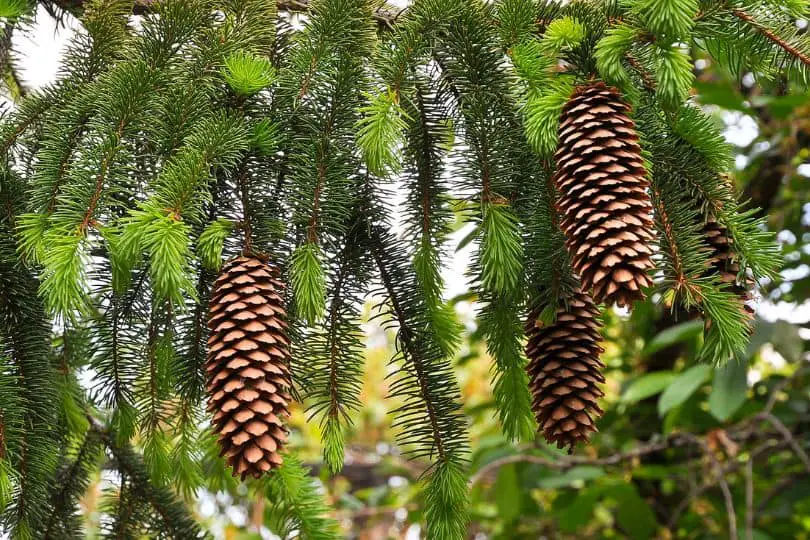
- Scientific Name: Picea abies (L.) Karst
- Common Name: Norway Spruce
- Mature Height: Up to 120 feet (36 meters)
- Native Region: Europe
- Flowers: No Flowers
- Fruit: Cylindrical cones, 5-7 inches long, light brown
- Uses: Wood is used for paper pulp, boxes, crates, and lumber. Provides shelter for birds, and seeds are eaten by crossbills.
The Norway Spruce, Picea abies (L.) Karst is a huge evergreen tree with a dense conical crown that can reach heights of up to 120 feet. It is native to Europe and has become an important member of Pennsylvania’s woodlands, where it is widely planted as an attractive tree. The Norway Spruce, which has become indigenous in the area, is recognized for its beautiful look.
The Norway Spruce’s leaves are evergreen needles that grow singly and spirally on twigs. They are four-sided and sharp-pointed, measuring about 34 of an inch long. The leaves are dark green in hue and provide a brilliant display all year. The tree’s twigs are bright and golden brown, while the egg-shaped buds are darker.
The bark of the Norway Spruce is rather thin and reddish-brown in appearance, becoming gray-brown as the tree ages. On elderly trees, the bark is scaly and rarely furrowed. The tree produces light brown cylindrical cones that can grow to be 5 to 7 inches long. These cones serve as the tree’s fruit.
The Norway Spruce is often employed as an ornamental tree in Pennsylvania landscapes due to its aesthetic appeal. It is a popular choice for landscaping due to its towering conical crown and beautiful dark green foliage. Furthermore, the wood of the Norway Spruce is quite expensive and is used in a variety of businesses. It is extensively used in the production of paper pulp, boxes, crates, and lumber.
Various bird species use the Norway Spruce for habitat and refuge. Songbirds, hawks, and owls seek sanctuary in the tree’s limbs. Furthermore, red and white-winged crossbills devour Norway Spruce seeds, which play an important role in seed dispersal. Porcupines eat on the tree’s bark and needles, making it a food source for them.
The Norway Spruce grows best in full light and well-drained soil. It is low-maintenance and requires little trimming. Watering is required regularly, especially during dry months, to support healthy growth.
Common Spruce Trees In Pennsylvania – Frequently Asked Questions (FAQs)
Let’s go through some of the common questions asked by gardeners and tree enthusiasts about native and non-native spruce trees in Pennsylvania.
Do spruce trees grow in Pennsylvania?
Spruce trees can grow in Pennsylvania, yes. The climate and soil conditions in Pennsylvania are ideal for several spruce tree species, including Blue Spruce and Norway Spruce. These spruce species are commonly used in landscaping and can be found throughout the state, particularly in gardens, parks, and rural areas. Spruce trees are prized for their evergreen foliage and are frequently used for ornamental and timber purposes.
What are the common uses of spruce trees in Pennsylvania?
Spruce trees in Pennsylvania are used for a variety of purposes. Because of their attractive evergreen foliage and aesthetic appeal, they are frequently used for landscaping and ornamental purposes in gardens, parks, and residential properties. Furthermore, spruce trees are important for timber production because their wood is used in construction, furniture manufacturing, and woodworking projects. They may also serve as windbreaks or privacy screens in rural areas. Furthermore, spruce trees benefit the ecosystem by providing habitat and food for a variety of wildlife species.
Similar Articles
- Common Flowering Trees In Pennsylvania
- Common Maple Trees In Pennsylvania
- Common Cherry Trees In Pennsylvania
- Common Pine Trees In Pennsylvania
- Native Locust Trees In Pennsylvania
- Common Nut Trees In Pennsylvania
- Common Cedar Trees In Pennsylvania
- Common Palm Trees In Pennsylvania
- Common Birch Trees In Pennsylvania
- Common Aspen Trees In Pennsylvania
- Common Oak Trees In Pennsylvania
- Common Ash Trees In Pennsylvania
- Common Elm Trees In Pennsylvania
- Pink Flowering Trees In Pennsylvania
- White Flowering Trees In Pennsylvania
- Purple Flowering Trees In Pennsylvania
Sources
The Regional Gardening team makes sure that the information in our articles is accurate by only using sources that are known to be trustworthy. Some of these sources are peer-reviewed journals from government agencies, well-known universities, and scientific research organizations.
- Native Plant Resources, Pennsylvania Native Plant Society
- Trees & Shrubs Varieties, PennState Extension
- Landscaping With Natives, Pennsylvania Department Of Conservation, & Natural Resources.
- Explore Pennsylvania Forests, Pennsylvania Department Of Conservation, & Natural Resources.


